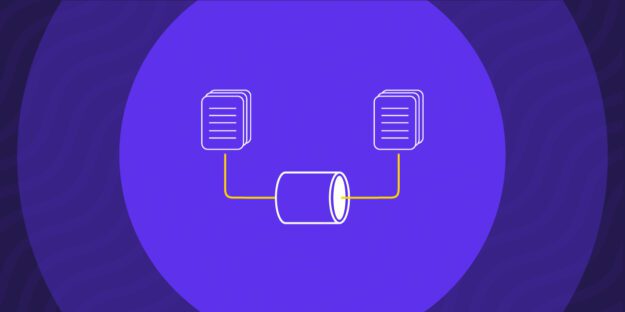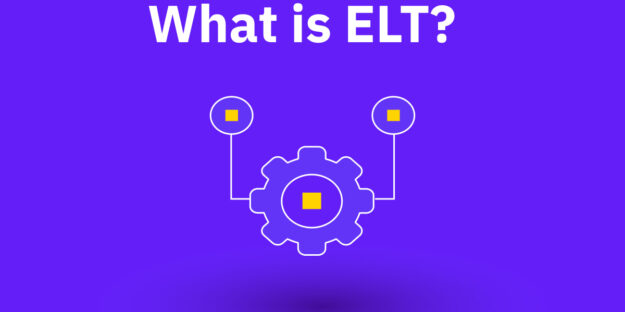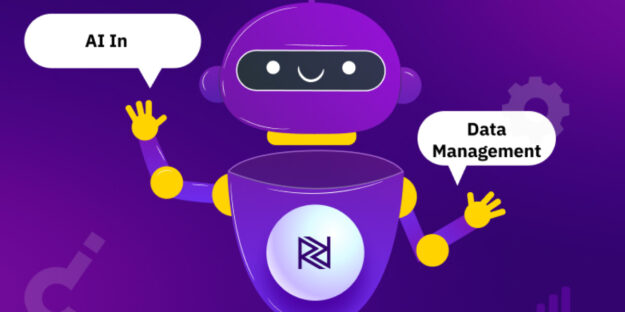As companies process large quantities of data, moving data between systems becomes essential for organizations leveraging data as a strategic advantage.
To do so effecitely, data teams create either ELT or ETL pipelines to manage their data for analytic and now AI use cases.
ETL was once a popular method of processing data for analytic use cases but the rise of cloud computing boosted the popularity of ELT pipelines that strategically allkow organizatons to handle larger datasets.
Understanding the difference between ELT (Extract, Load, Transform) and ETL (Extract, Transform, Load) is essential for choosing the right approach to processing data.
In this article, we will explore everything you need to know about ELT pipelines, from their advantages and disadvantages to best practices and common challenges.
What is an ELT Pipeline?
An ELT (Extract, Load, Transform) pipeline is a data processing architecture that pulls raw data from diverse sources. It then loads the data into a centralized destination, i.e., a data warehouse, and transforms it within that destination.
Unlike ETL, where you transform data before you load it into the destination system—ELT delays the transformation process until the data is in the destination.
This method uses modern cloud-based data warehouses, which can handle large volumes of data and perform complex transformations. This offers a more flexible and scalable solution if you manage large datasets.
The Difference Between ELT Pipeline and ETL Pipeline
ETL (Extract, Transform, Load) and ELT (Extract, Load, Transform) pipelines have different approaches to data processing.
For instance, in an ETL pipeline, you first extract data from various source systems and transform it before loading it into your target system (like a data warehouse). This ensures you only load structured data, which is ideal for ensuring data quality.
In contrast, ELT pipelines reverse this order. You extract data and load it into the target system (often a data lake or a data warehouse). You transform the data after loading it into the target system, ensuring you use the power of your target system to organize data.
As a result, this allows for quicker data availability and flexibility because you can adjust transformations on-demand after loading the data.
The choice between ETL and ELT depends on various factors:
- The complexity of data transformations.
- Performance requirements.
- System capabilities.
ETL is suitable for scenarios where preprocessing is critical. However, ELT is advantageous for handling large volumes of data and leveraging the target system’s processing power.
How Is ELT Outperforming ETL
In the era of big data, people often favor ELT pipelines. This is due to how they handle increasing data volumes and challenging transformations.
Let’s look deeper into whether ELT is performing stronger than ETL:
Advantages of ELT Pipelines
- Speed: ELT pipelines load raw data into the destination system. This leads to faster data ingestion. You can also perform transformations in parallel, which reduces the time to insights.
- Scalability: With ELT, the system can easily scale to accommodate growing data volumes. The cloud-based nature of ELT pipelines enables them to leverage scalable storage and compute resources.
- Flexibility: ELT pipelines offer greater flexibility in managing diverse data sources and formats. Since transformations occur after loading, the system can adapt to changing data structures more easily.
- Cost efficiency: By utilizing cloud-based storage and computational power, ELT pipelines can reduce the costs associated with maintaining on-premises infrastructure. Organizations only pay for the resources they use, making it a cost-effective solution.
Disadvantages of ELT Pipelines
- Data quality concerns: Since raw data is loaded directly into the destination system, there may be concerns about the quality of the data before transformation. Poor-quality data can lead to inaccurate analyses.
- Complex transformations: Performing transformations after loading can be challenging, especially with highly complex data. The system may require advanced tools and skilled personnel to manage these transformations effectively.
- Resource Intensive: ELT pipelines rely heavily on the processing power of the destination system. In some cases, this can lead to increased costs, especially if the data warehouse’s computational resources are under strain.
Advantages of ETL Pipelines
- Data validation: ETL pipelines ensure that data is validated and cleaned before it enters the destination system. This preprocessing step helps maintain high data quality and consistency.
- Suitability for legacy systems: ETL is often better suited for organizations with legacy systems that cannot easily handle the computational demands of ELT. ETL allows these systems to continue functioning without significant infrastructure changes.
- Structured data: ETL pipelines are particularly effective in environments where data is highly structured and requires minimal post-loading transformations.
Disadvantages of ETL Pipelines
- Slower processing: The transformation step in ETL can create a bottleneck, which slows the overall data processing time. This is problematic as data volumes grow.
- Limited scalability: ETL pipelines may struggle to scale with increasing data volumes, as the transformation step requires more resources and time. This can lead to inefficiencies and delays.
- Rigid architecture: ETL pipelines are less flexible when it comes to handling diverse data sources and formats. Changes in data structures often require significant rework in the pipeline design.
Where ELT Outperforms ETL
ELT pipelines generally outperform ETL in environments where speed, scalability, and flexibility are critical.
ELT can handle large volumes of data more efficiently by deferring transformations until after data is loaded into the destination system. This is outstanding for modern cloud-based data ecosystems.
However, you may still prefer ETL in certain scenarios. For instance, where data quality and validation are paramount, or where legacy systems require a more structured approach.
Why Does Your Business Need ELT Pipelines?
Having access to real-time data insights is a competitive advantage in the current times. ELT pipelines also process and analyze large volumes of data quickly and efficiently. Furthermore, the scalability and flexibility of ELT pipelines make them crucial in any data-driven strategy.
7 Business Benefits of ELT Pipelines
1. Faster Time to Insights
ELT pipelines streamline the data processing workflow by first loading raw data into a data warehouse before applying transformations. This minimizes delays with pre-loading data transformations; it also speeds up access to actionable insights.
2. Simplified Architecture
ELT pipelines simplify the data architecture by decoupling the extraction and loading processes from the transformation stage. As a result, this makes ELT pipelines easier to manage and maintain.
3. Scalability
ELT pipelines are superb if you’re experiencing rapid data growth. The cloud-based nature provides scalability without the constraints of traditional hardware limitations.
Scaling up with cloud-based ELT pipelines involves adjusting your usage plans rather than investing in additional physical hardware. This can also lead to cost-effective growth management.
4. Flexibility
ELT pipelines offer greater flexibility in handling diverse data sources and formats. This adaptability is crucial for businesses that need to integrate new data sources or adjust to evolving data structures.
ELT pipelines can accommodate different data formats and structures. This allows you to work with a wide range of data types—including structured, semi-structured, and unstructured data.
5. Cost Efficiency
ELT pipelines often leverage cloud-based infrastructure, which can be more cost-effective than maintaining traditional on-premises data processing systems. You can also reduce the need for in-house maintenance and upgrades associated with physical infrastructure. This lowers operational costs and frees up IT resources.
6. Future-Proofs Data Infrastructure
ELT pipelines are designed to integrate with the latest advancements in cloud computing and big data technologies. As such, this ensures your data infrastructure remains current and capable of meeting future demands.
The cloud-based nature of ELT pipelines also ensures the infrastructure can scale and adapt as new data processing technologies emerge. This future-proofs the data architecture against obsolescence.
7. Support for Advanced Analytics
ELT pipelines provide a robust foundation for advanced analytics by loading raw data into a data warehouse, where complex algorithms and models can be applied to generate deeper insights.
With raw data available in the data warehouse, you can leverage powerful analytical tools to perform complex calculations, machine learning, and predictive modeling without the constraints of pre-processed data.
Best Practices to Build a Robust ELT Pipeline
Building a robust ELT pipeline requires careful planning, development, and management. Here are some best practices to follow:
1. Planning and Design
You must outline the goals and expected outcomes of your ELT pipeline. This will guide the design and implementation process. You should also learn the data sources you will be integrating. This will help design a pipeline that can handle the diversity and volume of data.
In addition, design a data model that supports the needs of your business. However, you should consider how data will be stored, accessed, and transformed within the pipeline.
2. Development and Implementation
You must select tools that align with your pipeline’s requirements. This includes data integration tools, transformation engines, and cloud storage solutions.
Automation is also essential. You should implement automation to streamline the data loading and transformation processes; by doing this, you’ll lower the risk of errors and increase efficiency.
3. Deployment and Management
You should continuously monitor the performance of your ELT pipeline to identify and address any bottlenecks or inefficiencies. Effective deployment strategies require careful planning, testing, and monitoring to maintain the pipeline’s integrity and performance over time.
4. Leveraging AI for Enhanced Efficiency
Adding AI into your ELT pipeline has become a best practice for modern data engineering. AI can significantly reduce human error, automate repetitive tasks, and even generate complex SQL and Python scripts. This lets you move faster and more efficiently.
4 Common ELT Challenges and How to Avoid Them
1. Data Quality Issues
- Challenge: Loading raw data directly into the data warehouse can lead to data quality issues, such as duplicate records, missing values, or inconsistent formats.
- Solution: You should implement data quality checks and cleansing processes as part of your transformation steps. Use tools that can automatically identify and correct data quality issues.
2. Complex Data Transformation
- Challenge: Handling complex transformations within the data warehouse can be challenging, especially when dealing with large datasets.
- Solution: Try using specialized transformation tools that can handle complex data processing tasks efficiently. Break down transformations into smaller, manageable steps to simplify the process.
3. Integration with Diverse Data Sources
- Challenge: Integrating data from multiple, diverse sources can be difficult, particularly if the data comes in different formats or structures.
- Solution: You can use data integration tools that support multiple data sources and formats. For example, Rivery offers over 200 native connectors, which makes it easier to integrate numerous data sources seamlessly.
4. Time Constraints
- Challenge: As the volume of data grows, the time required to process and transform this data can become a constraint.
- Solution: You can optimize your pipeline by parallelizing data transformations and using scalable cloud resources. This approach can help reduce processing times and meet business deadlines.
5. Resource Limitations and Team Capacity
- Challenge: Smaller teams often face significant resource constraints. Data engineers may also spend excessive time on building, troubleshooting, and managing pipelines. This takes time away from more strategic tasks.
- Solution: You can use AI and automation tools to decrease the burden on your team. For example, AI can automate routine tasks, such as generating code and monitoring pipeline performance.
AI in ELT Pipelines
AI is increasingly being incorporated into ELT pipelines. As such, this has generated significant advancements in how you can process and analyze data.
AI can also automate complex transformations, improve data quality, and predict potential issues before they arise.
Also, as AI technologies continue to evolve, they are expected to play an even more significant role in optimizing ELT pipelines—which makes them smarter and more efficient.
Here are the current and future AI trends:
1. Automated Data Transformation
Companies are increasingly using AI to automate the data transformation process, which significantly reduces manual intervention. AI can also adapt to changes in data schemas and formats. This makes the transformation process more resilient and reduces the time required for data processing.
2. Predictive Maintenance
AI can predict and identify potential pipeline failures by analyzing historical data and identifying patterns that precede issues. This enables proactive maintenance, which reduces downtime and extends the lifespan of infrastructure.
AI-driven predictive maintenance can also optimize resource allocation by ensuring that maintenance efforts are focused on the most critical areas. In turn, this minimizes operational disruptions and lowers maintenance costs.
3. Advanced Analytics Integration
AI-driven ELT (Extract, Load, Transform) pipelines are better equipped to handle advanced analytics tasks. Examples include real-time data processing, anomaly detection, and machine learning model deployment.
Additionally, AI can enhance the scalability of analytics processes, which allows seamless handling of large volumes of data across various platforms.
4. Enhancing Data Validation
Although AI can automate many aspects of pipeline development, human oversight is still essential. Tools like Rivery Blueprint generate data pipeline configurations as human-readable YAML files.
This allows your engineers to validate and modify AI-generated pipelines easily. Also, it ensures that AI-driven automation does not compromise the accuracy or integrity of the data.
5. Improving Scalability and Adaptability
AI plays a crucial role in improving data quality by automating data cleansing, validation, and enrichment processes. AI systems can detect anomalies, inconsistencies, and errors in data more effectively than traditional methods.
Moreover, AI can assist in enforcing data governance policies by monitoring compliance with data standards, identifying potential risks, and ensuring data is ethically and legally used.
6. Simplifying Data Integration
Traditionally, integrating new data sources involves filtering through extensive API documentation, learning various settings, and handling issues like pagination, rate limits, and error handling. In short—it can be time-consuming and problematic.
However, AI platforms like Rivery have redefined this process by leveraging Generative AI (GenAI) to simplify data integration. With GenAI, your data engineers can connect to any source using a simple prompt, which decreases the time and effort required.
Final Thoughts
ELT pipelines are becoming the preferred choice for modern data processing due to their speed, scalability, and flexibility. With the integration of AI and other advanced technologies, the future of ELT pipelines looks promising with greater capabilities and efficiencies.
Minimize the firefighting. Maximize ROI on pipelines.





